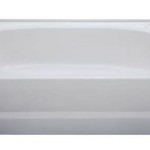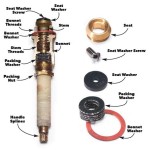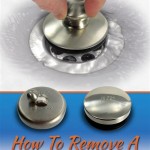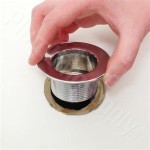How to Clean Dirt Stains Off a Bathtub
A bathtub, designed for relaxation and hygiene, can quickly become marred by unsightly dirt stains. These stains often originate from bathers who enter the tub with dirt residue from outdoor activities, gardening, or even everyday tasks. Over time, this accumulated dirt can embed itself into the bathtub's surface, making it appear dingy and less inviting. Understanding the nature of these stains and implementing effective cleaning techniques is crucial for maintaining a clean and sanitary bathing environment.
The composition of dirt stains can vary, comprising a mixture of soil, organic matter, minerals, and sometimes even traces of oils and greases. The type of bathtub material, whether it's porcelain, acrylic, or fiberglass, also influences how dirt adheres to the surface and the most appropriate cleaning methods to employ. Harsh abrasives can damage certain materials, while milder cleaners may prove ineffective against stubborn stains. Therefore, identifying the bathtub material and the severity of the stains is the first step in a successful cleaning process.
This article will provide a comprehensive guide on how to effectively remove dirt stains from various types of bathtubs, focusing on practical techniques and readily available cleaning solutions. This guide will cover preparation steps, cleaning product selection, specific cleaning methods, and preventative measures to minimize the occurrence of future dirt stains.
Preparing to Clean the Bathtub
Before embarking on the cleaning process, proper preparation is essential to ensure both the effectiveness of the cleaning and the protection of the surrounding area. The first step involves gathering the necessary cleaning supplies. This includes a suitable cleaning solution, a non-abrasive sponge or cloth, a scrub brush (if appropriate for the bathtub material), rubber gloves, and a bucket. The choice of cleaning solution will depend on the type of bathtub material and the severity of the stains.
Protecting the surrounding area is equally important. Laying down old towels or drop cloths around the bathtub’s perimeter can prevent cleaning solution spills from damaging the bathroom floor. Ensuring adequate ventilation is also crucial, especially when using strong cleaning agents. Opening a window or turning on the exhaust fan will help to dissipate fumes and maintain a healthy air quality.
Before applying any cleaning solution, it is advisable to rinse the bathtub thoroughly with warm water. This initial rinse helps to loosen any loose dirt and debris, making the subsequent cleaning process more effective. It also allows for a clearer assessment of the stain's severity and location. This pre-cleaning step significantly contributes to the overall efficiency and effectiveness of the stain removal process.
Selecting the Right Cleaning Solution
The selection of the appropriate cleaning solution is paramount to achieving optimal results without causing damage to the bathtub surface. Different bathtub materials react differently to various cleaning agents, so understanding the material composition is key. For instance, porcelain bathtubs are generally more durable and can withstand slightly harsher cleaners compared to acrylic or fiberglass tubs, which are more prone to scratching and damage.
For mild dirt stains on most bathtub materials, a solution of warm water and mild dish soap can be highly effective. The gentle nature of dish soap allows for safe cleaning without the risk of damaging the surface. For slightly more stubborn stains, a paste made from baking soda and water can be applied to the affected area. Baking soda’s mild abrasive properties help to lift the dirt without scratching the bathtub. This paste should be left on the stain for approximately 15-20 minutes before being rinsed off with warm water.
For more persistent dirt stains, commercially available bathtub cleaners can be utilized. However, it is crucial to carefully read the product label and ensure that it is specifically formulated for the type of bathtub material being cleaned. Avoid using abrasive cleaners or scouring pads on acrylic or fiberglass tubs, as these can cause irreversible scratches and dull the finish. When using commercially available cleaners, always follow the manufacturer's instructions regarding application, dwell time, and rinsing procedures. Testing the cleaner on an inconspicuous area of the bathtub before applying it to the entire surface is a prudent step to ensure compatibility and prevent any adverse reactions.
Effective Cleaning Methods for Dirt Stains
Once the appropriate cleaning solution has been selected, the next step involves applying it effectively to the dirt-stained areas. Using a non-abrasive sponge or cloth, gently apply the cleaning solution to the affected areas, ensuring that the entire stain is thoroughly covered. For stubborn stains, allow the cleaning solution to dwell on the surface for a few minutes to allow it to penetrate and loosen the dirt. The dwell time will vary depending on the cleaning solution used and the severity of the stain, so it's important to adhere to the manufacturer's instructions or the recommendations for the specific cleaning method being employed.
After the dwell time, use a soft-bristled scrub brush or a non-abrasive sponge to gently scrub the stained areas. Avoid applying excessive pressure, as this can damage the bathtub surface, especially on acrylic or fiberglass tubs. Focus on using circular motions to lift the dirt from the surface. For hard-to-reach areas, such as corners and crevices, a detailing brush or an old toothbrush can be used to effectively remove dirt and grime.
Once the scrubbing is complete, rinse the bathtub thoroughly with warm water to remove all traces of the cleaning solution and loosened dirt. Ensure that no residue remains, as this can attract more dirt and grime and potentially cause discoloration or staining over time. After rinsing, inspect the bathtub to ensure that all dirt stains have been successfully removed. If any stains persist, repeat the cleaning process, potentially using a slightly stronger cleaning solution or increasing the dwell time. Once satisfied with the cleanliness of the bathtub, dry it thoroughly with a clean towel to prevent water spots and further dirt accumulation.
For particularly stubborn dirt stains that resist standard cleaning methods, alternative solutions may be necessary. One such solution is using a paste made from cream of tartar and hydrogen peroxide. Apply the paste to the stain, allow it to sit for several hours, and then rinse it off with warm water. Another option is to use a melamine foam sponge, often referred to as a magic eraser. These sponges have a micro-abrasive texture that can effectively remove dirt and grime without the need for harsh chemicals. However, it is important to test the magic eraser on an inconspicuous area of the bathtub first, as it can potentially dull the finish on certain materials.
Another approach involves using a solution of vinegar and water. Vinegar is a natural acid that can help to dissolve dirt and grime. Mix equal parts white vinegar and water in a spray bottle, spray the solution onto the stained areas, and let it sit for about 15-20 minutes. Then, scrub the area with a non-abrasive sponge and rinse thoroughly with warm water. The acidic properties of vinegar can effectively break down dirt and mineral deposits, leaving the bathtub clean and shiny.
Steam cleaning the bathtub is also an effective method for removing dirt and grime, especially in hard-to-reach areas. A steam cleaner uses hot steam to loosen dirt and debris, which can then be wiped away with a cloth. This method is particularly useful for cleaning grout lines and corners where dirt tends to accumulate. However, it is important to exercise caution when using a steam cleaner on acrylic or fiberglass tubs, as the high heat can potentially damage the surface. Always test the steam cleaner on an inconspicuous area first and avoid prolonged exposure to high heat.
Preventative measures are crucial for minimizing the occurrence of dirt stains in the bathtub. Encouraging bathers to rinse off before entering the tub can significantly reduce the amount of dirt and debris that enters the water. Regularly cleaning the bathtub, ideally after each use or at least once a week, can prevent dirt from accumulating and becoming embedded in the surface. Using a squeegee to remove excess water after each use can also help to prevent water spots and mineral buildup.
In addition to regular cleaning, consider using a bathtub mat or non-slip stickers to protect the bathtub surface from scratches and wear. These mats can also help to trap dirt and debris, preventing it from adhering to the bathtub surface. Regularly cleaning the bathtub mat and replacing it when necessary will further contribute to maintaining a clean and sanitary bathing environment.
Maintaining proper bathroom ventilation is also essential for preventing the growth of mold and mildew, which can contribute to staining and discoloration. Ensure that the exhaust fan is functioning properly and use it during and after showers and baths to remove excess moisture from the air. Opening a window to allow for natural ventilation can also help to prevent moisture buildup.

How To Clean A Dirty Bathtub At Home With Ashley

How To Clean A Dirty Tub Quickly

How To Remove Stains From A Bathtub

How To Clean Tough Stains From A Bathtub 4 Easy Methods

How To Clean A Dirty Tub Quickly

How To Clean A Dirty Bathtub At Home With Ashley

How To Clean Bathtub Stains Easy Bathroom Cleaning With Bar Keepers Friend

How To Remove Tub Stains Naturally With Non Toxic Homemade Cleaners

How To Clean Tough Stains From A Bathtub 4 Easy Methods

How To Clean A Dirty Bathtub At Home With Ashley








